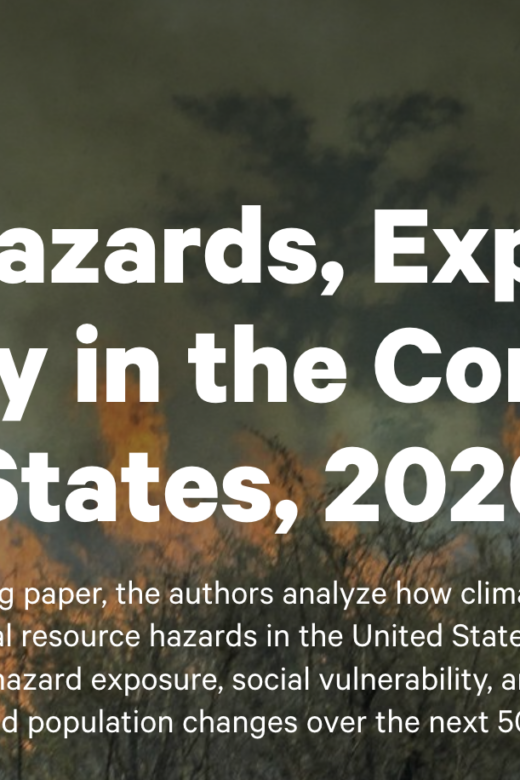The working paper “Changing Hazards, Exposure and Vulnerability in the Conterminous United States, 2020–2070” from Resources for …
Field plot measurements from the 2017-2020 FASMEE Rx fires
Vegetation characteristics measured before (pre-fire) and after (post-fire) a series of prescribed fires, from 2017 to 2020, on …
Continue Reading about Field plot measurements from the 2017-2020 FASMEE Rx fires
Leveraging local habitat suitability models to enhance restoration benefits for species of conservation concern
Restoring habitats with limited resources is challenging, but this study offers a data-driven approach to maximize impact. Using …
Edge Effects Along Roadside Fuel Treatments in Sagebrush Steppe
The construction of fuel breaks is a common strategy for suppressing wildfires in rangelands, but it can also increase the number …
Continue Reading about Edge Effects Along Roadside Fuel Treatments in Sagebrush Steppe
Evaluating the Development and Application of Stand Density Index for the Management of Complex and Adaptive Forests
This review examines the evolution of Stand Density Index (SDI) as a key metric for assessing forest stand density and predicting …
When more blackberries is a bad thing: Invasive plant management support
Rocky Mountain Research StationScience you can use: This article explores how non-native blackberry species are spreading …
Continue Reading about When more blackberries is a bad thing: Invasive plant management support
Green is the New Black: Outcomes of post-fire tree planting across the US Interior West
With severe wildfire activity increasing across the western United States, reforestation efforts such as tree plantings are seen …
The fastest-growing and most destructive fires in the US (2001 to 2020)
Wildfires that spread rapidly are the most dangerous, and their growth rates have significantly increased across the U.S. between …
Continue Reading about The fastest-growing and most destructive fires in the US (2001 to 2020)

